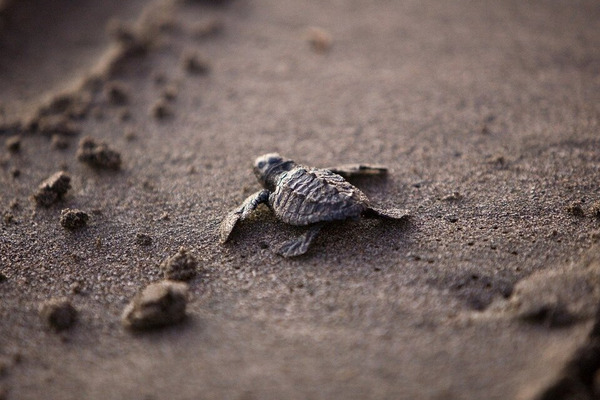It's Sea Turtle Nesting Season on the Space Coast!
Posted: July 13th, 2020
A Spectacle Unique to the Space Coast
The last time you went to the beach, you probably didn’t see many sea turtles lounging on the shore--but Florida welcomes over 100,000 endangered sea turtles to its beaches every summer. According to VisitFlorida.com, “nearly 90 percent of sea turtle nesting in the U.S. occurs in Florida from March through October of each year. Four species of turtles in particular have been sighted nesting in Cape Canaveral: green sea turtles, leatherbacks, loggerheads, and Kemp’s Ridleys.
Nesting Turtle Sightings: Where, When, and How
This breathtaking spectacle is just one of the reasons why we love living on the Space Coast. Just this May, a handful of lucky beachgoers got to witness a leatherback making her nest on Melbourne Beach during daylight hours, according to Fox13 News. In prior years, a few environmental groups led turtle walks to allow people the opportunity to watch turtles make their nests; however, these gatherings have been canceled for 2020.
If you’re at one of the Space Coast’s beautiful beaches after sundown, you may be able to catch sight of a nesting turtle for yourself, but there are some very important rules to follow to ensure you don’t interfere with their nesting cycle.
Don’t use flashlights, flash photography, or other lighting devices
Artificial light disrupts sea turtles’ nesting procedures in a couple ways. First of all, female sea turtles seek dark, secluded areas in which to make their nests. Bright light deters them and may prevent the turtle from making her nest as planned. Secondly, hatching sea turtles are attracted to bright lights. Shining lights on them encourages them to crawl inland after they hatch rather than finding their way to the sea.
If you live on the beach, you probably already know this rule. Local ordinances state that “all indoor and outdoor lights visible from the beach must be shielded, repositioned, replaced or turned off from 9 p.m. to 5 a.m.” from May 1 to October 31, according to Florida Today.
Clean up your area
After your day at the beach, be sure to clean up all furniture, towels, and other accessories you may have brought with you. Near the shore, these can prevent mother turtles from finding an appropriate nesting site. Be sure to clean up any trash in your area, as well. Trash attracts predators, like raccoons, that also like to eat hatchling turtles. What’s more, mother turtles can choke on plastic bags or straws. Keep our beaches beautiful for animals and other humans!
Never touch the turtles or their nests
Environmental groups mark sea turtle nests on the beach so people know to avoid them. Hatchlings may be cute, but touching them or picking them up can leave oils from our skin on their shells and interrupt the learning process that’s crucial for their survival. When a hatchling crawls from the sand to the sea, it’s learning that migratory track for future excursions. Thus, touching, picking up, or disturbing sea turtles is illegal.
A Beautiful Sight to Behold
Watching a sea turtle lay its eggs, or watching the eggs hatch, is one of the most beautiful things Space Coast residents can see. Taking the proper precautions near turtle nests ensures that future generations of Space Coasters will be able to witness it, too. If you’ve been lucky enough to witness turtle nesting, tell us about it on Facebook. To learn more about living on the Space Coast, or about our available luxury properties, call Ellingson Properties at 321-750-7050 today.

